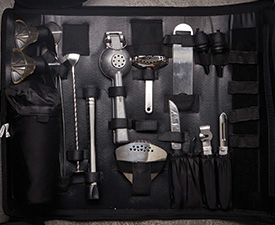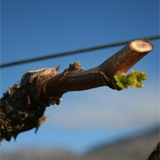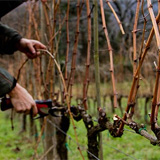Pruning grape vines is a basic principle that any winemaker, grape-grower, regardless of experience must understand. Whenever you leave a vine unpruned, the first year you'll have a large crop; one may feel delighted with this success and wonder what all the pruning fuss is about.
Key fact one must know - the vine will produce more fruit than it knows what to do with because when you actually prune a vine correctly, you remove as much as 90% of the previous season's growth. If you leave all of that growth from the previous year it will have buds, which means you'll have a huge crop the following year.
The vine can't produce enough energy to ripen an unregulated crop, and it will be poor quality. The clusters will be straggly, and you won't have fruit worth using. Even if able to ripen, given that it has to work so hard the vine will have diverted energy that it would normally use to mature the 'wood' and to help the vine get ready for winter.
Correct pruning keeps the vine in balance; it maintains the vines natural equilibrium and helps keep the vine in the form you want. It allows you to have a good regular crop of the best quality grapes year after year. Grapevines have the ability to grow and cover a considerable area, so from a practical point of view this needs to be managed. In many ways pruning is, in essence, the art of grape growing, which seeks to improve on what nature does by encouraging the natural process.
Climate, variety and soil fertility determine the rate at which vines will progress. Hybrid varieties were developed to be hardier during the winter and more resistant to diseases. They tend to produce less foliage then traditional vines. The annual pruning removes the previous years fruiting canes or spurs. Because fruit is only produced on shoots growing from one-year-old canes, healthy new canes must be produced by the vine every year. Hand tools like secateurs and handsaws are typically used to prune grape vines, with the goal to avoid unnecessary injury to the plant.











